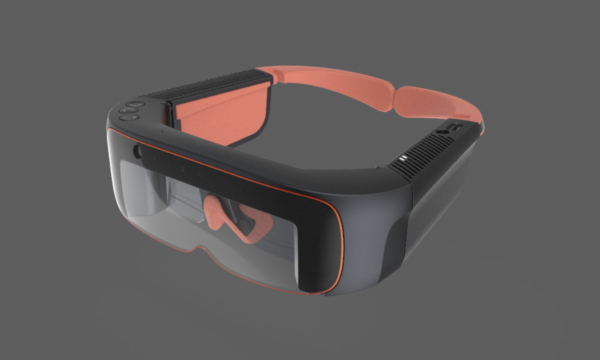 The promise of mixed reality – which involves the merging of real and virtual worlds through a technological device – has led investors to pour billions into startups like Magic Leap and a major effort from Microsoft to develop their HoloLens product.
The promise of mixed reality – which involves the merging of real and virtual worlds through a technological device – has led investors to pour billions into startups like Magic Leap and a major effort from Microsoft to develop their HoloLens product.
While the entertainment and gaming applications for the technology are clear, mixed reality has seen increasing use in industrial and enterprise settings.
Mixed reality glasses startup ThirdEye Gen is betting hard on the technology’s intersection with healthcare and has developed a partnership with handheld ultrasound company Dolphin Medical Imaging to bring their devices into the clinic.

Behavioral Health, Interoperability and eConsent: Meeting the Demands of CMS Final Rule Compliance
In a webinar on April 16 at 1pm ET, Aneesh Chopra will moderate a discussion with executives from DocuSign, Velatura, and behavioral health providers on eConsent, health information exchange and compliance with the CMS Final Rule on interoperability.
Based in Princeton, New Jersey, ThirdEye Gen is not as well capitalized as some of its competitors, but has developed smartglasses that CEO Nick Cherukuri touts as much more portable and affordable than existing options on the market.
The company’s X2 mixed reality smartglasses are about half the size of the Microsoft Hololens and retail for $1,950, compared to $3,500 for Microsoft’s device.
Initially the idea being the collaboration with Dolphin Medical is to use the device to make it easier for clinicians to find blood vessels for the placement of catheters. Currently, Dolphin Medical’s technology is linked to a tablet or mobile device, integrating ThirdEye’s glasses would beam the image directly into the user’s eyes.
Eventually the companies are looking to expand the partnership to develop new applications for use in pre-hospital and inpatient emergency and critical care.

A Deep-dive Into Specialty Pharma
A specialty drug is a class of prescription medications used to treat complex, chronic or rare medical conditions. Although this classification was originally intended to define the treatment of rare, also termed “orphan” diseases, affecting fewer than 200,000 people in the US, more recently, specialty drugs have emerged as the cornerstone of treatment for chronic and complex diseases such as cancer, autoimmune conditions, diabetes, hepatitis C, and HIV/AIDS.
Dolphin Medical Chief Medical Officer Mel Harris described the added benefit as “the whole being greater than the sum of the parts.”
“Sure you can see an image off a tablet, but when you’re a medic in a pre-hospital setting or dealing with a critical care case, you want information at the point of care immediately right in front of your eyes with great mobility and ease of access,” Harris said.
Cherukuri said the company’s enterprise strategy led the team to develop a form factor which can be worn for multiple hours comfortably, has the ability to work in different lighting situations and is scalable for a large workforce because of its lower price point.
ThirdEye does only limited software development internally and instead collaborates with more than 1,000 software development partners globally to build new use cases and applications.
Outside of the company’s work with Dolphin, Cherukuri pointed to other healthcare use cases that have emerged like helping the visually impaired and providing more effective remote telehealth support for clinicians.
Of course, as in the case with any emerging technology, there’s no guarantee of success. The virtual reality and mixed reality space is littered with companies that had big ideas, but couldn’t pull them off.
In fact, Harris started his own mixed reality company focused on vascular previously that failed to gain momentum in the market.
So what makes now the right time for a company like ThirdEye to make a splash in healthcare?
“The tipping point of ultrasound by non-physicians has been reached,” Harris said. “What Dolphin has done with ThirdEye is simplified the technology, decreased the cost and package it with a wearable computer capable of handling an enormous amount of information to better optimize medical care.”
Picture: ThirdEye Gen












